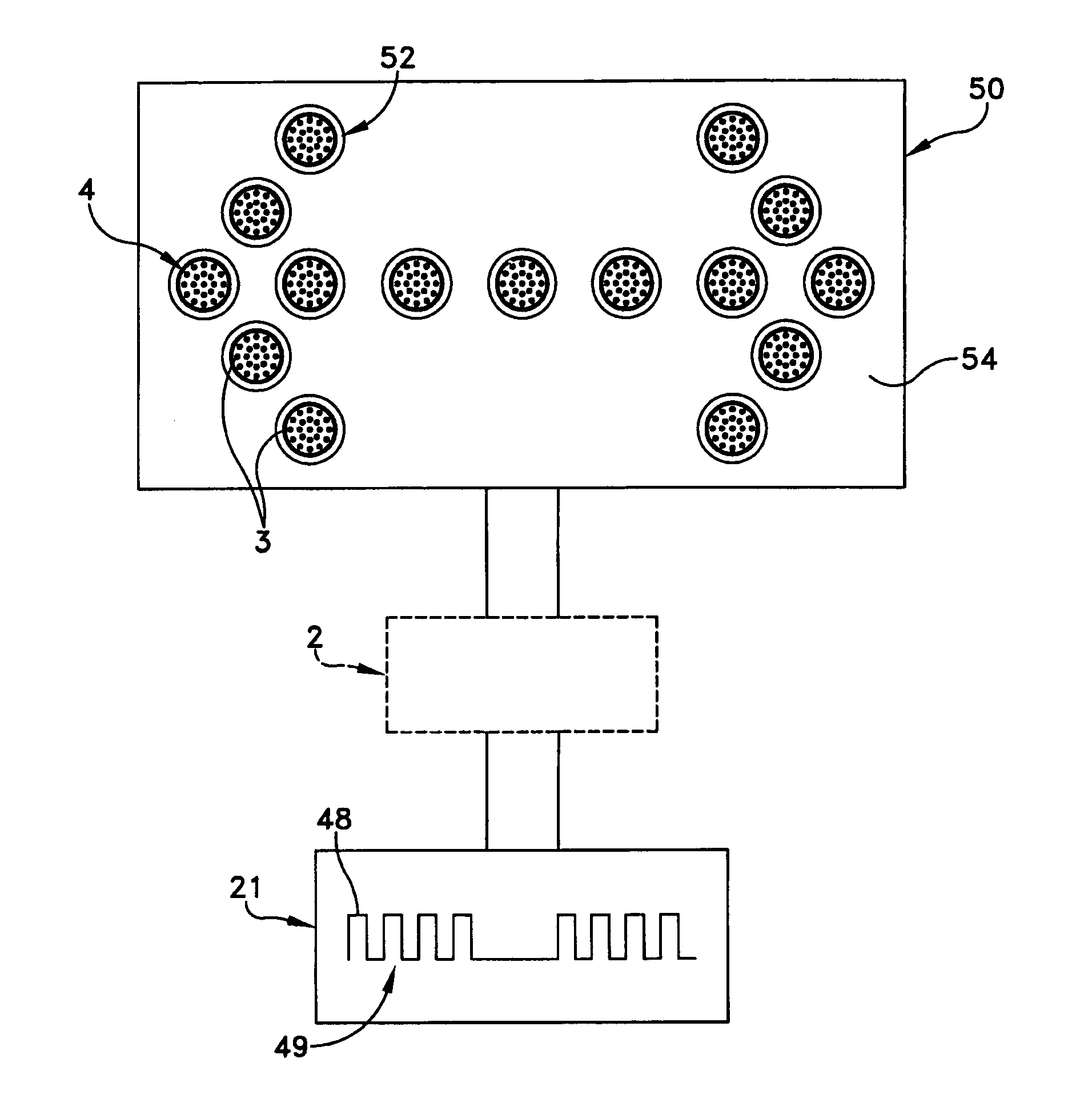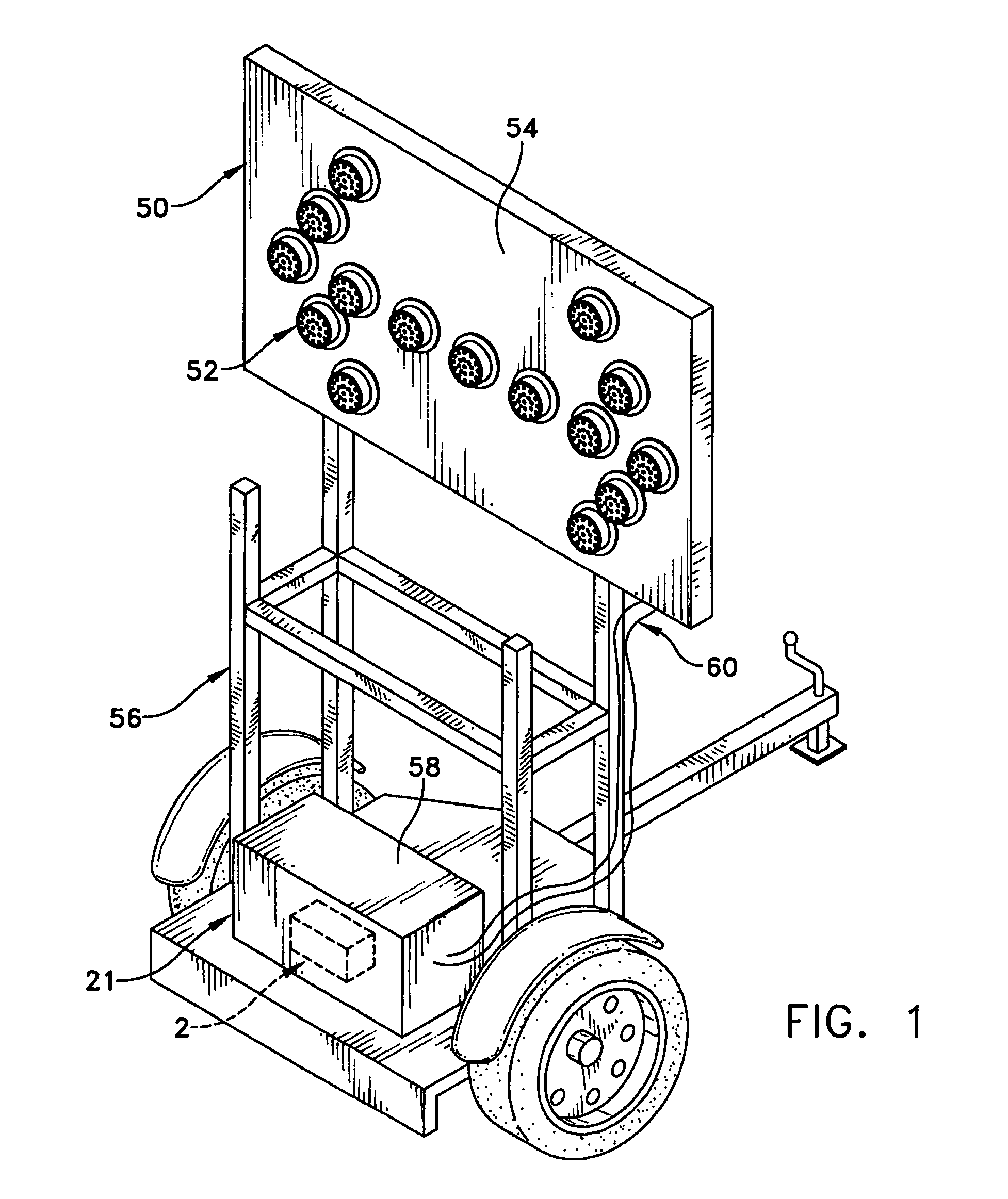Burst pulse circuit for signal lights and method
a pulse circuit and signal light technology, applied in the field of signal lights, can solve the problems of sacrificing device power consumption and reliability of light sources, each of these prior art illumination means has had its disadvantages, and the effect of low power consumption of flashing light devices cannot be achieved
- Summary
- Abstract
- Description
- Claims
- Application Information
AI Technical Summary
Benefits of technology
Problems solved by technology
Method used
Image
Examples
Embodiment Construction
[0028] This description of preferred embodiments is intended to be read in connection with the accompanying drawings, which are to be considered part of the entire written description of this invention. The drawing figures are not necessarily to scale and certain features of the invention may be shown exaggerated in scale or in somewhat schematic form in the interest of clarity and conciseness. Terms concerning attachments, coupling and the like, such as “connected” and “interconnected,” refer to a relationship wherein structures, circuits, or circuit elements are electrically or mechanically secured or attached to one another either directly or indirectly through intervening structures, unless expressly described otherwise. The term “level” refers to a reference voltage or current that may or may not have a zero magnitude. In the claims, means-plus-function clauses are intended to cover the structures described, suggested, or rendered obvious by the written description or drawings ...
PUM
 Login to View More
Login to View More Abstract
Description
Claims
Application Information
 Login to View More
Login to View More - R&D
- Intellectual Property
- Life Sciences
- Materials
- Tech Scout
- Unparalleled Data Quality
- Higher Quality Content
- 60% Fewer Hallucinations
Browse by: Latest US Patents, China's latest patents, Technical Efficacy Thesaurus, Application Domain, Technology Topic, Popular Technical Reports.
© 2025 PatSnap. All rights reserved.Legal|Privacy policy|Modern Slavery Act Transparency Statement|Sitemap|About US| Contact US: help@patsnap.com



